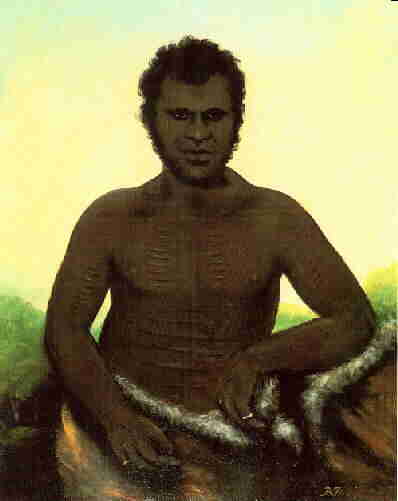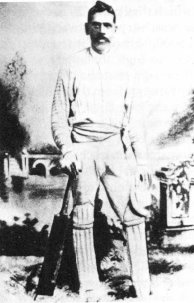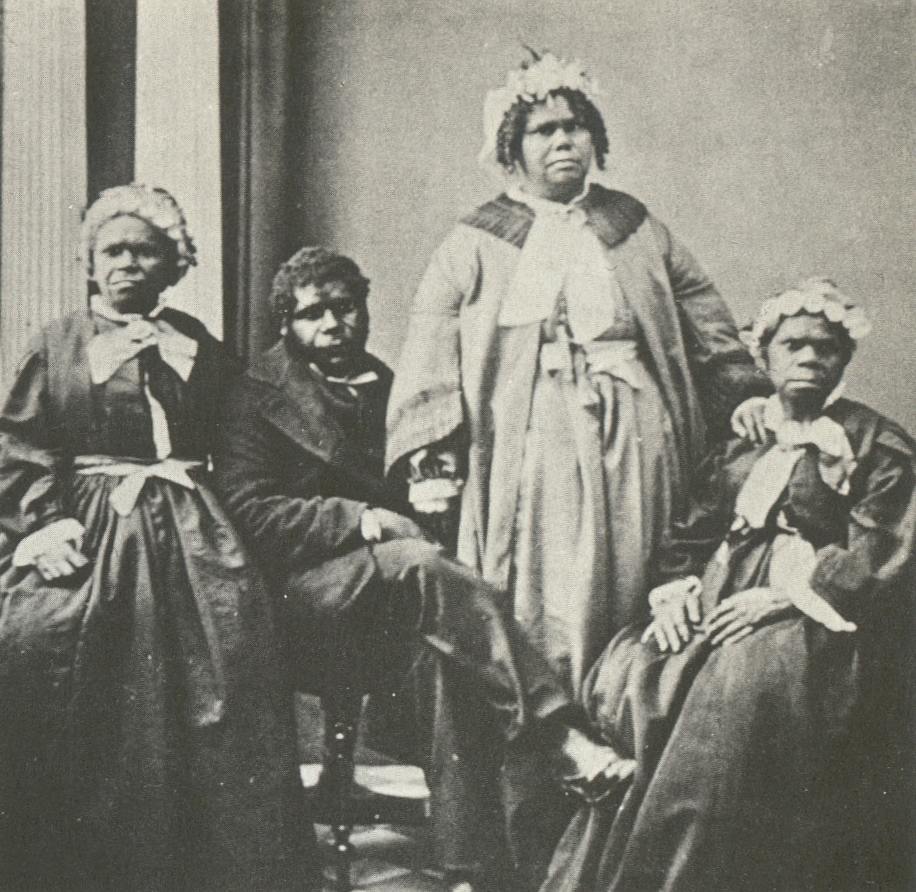|
List Of Indigenous Australian Historical Figures
Some Indigenous Australians are remembered in history for leadership prior to European colonisation, some for their resistance to that colonisation, others for assisting Europeans explore the country. Some became infamous for their deeds, and others noted as the last of their communities. Prior to 1788 * Cumbo Gunnerah – 18th century leader of the Kamilaroi people near Gunnedah, New South Wales 1788–1888 * William Barak (1824–1903) – ngurungaeta of Wurundjeri, police tracker, then artist * Bennelong – representative of the Eora People at the time Port Jackson was settled * Barangaroo – a Cammeraygal woman who served the colony as an intermediary under Governor Phillip * Billibellary (1799–1846) – ngurungaeta of the Wurundjeri-willam clan * Calyute – leader of the Pindjarup people at the time of the Battle of Pinjarra * Derrimut – Bunurong elder during European settlement of Melbourne * Dundalli (1820–1855) – Resistance leader in South East Que ... [...More Info...] [...Related Items...] OR: [Wikipedia] [Google] [Baidu] |
Indigenous Australians
Indigenous Australians or Australian First Nations are people with familial heritage from, and membership in, the ethnic groups that lived in Australia before British colonisation. They consist of two distinct groups: the Aboriginal peoples of the Australian mainland and Tasmania, and the Torres Strait Islander peoples from the seas between Queensland and Papua New Guinea. The term Aboriginal and Torres Strait Islander peoples or the person's specific cultural group, is often preferred, though the terms First Nations of Australia, First Peoples of Australia and First Australians are also increasingly common; 812,728 people self-identified as being of Aboriginal and/or Torres Strait Islander origin in the 2021 Australian Census, representing 3.2% of the total population of Australia. Of these indigenous Australians, 91.4% identified as Aboriginal; 4.2% identified as Torres Strait Islander; while 4.4% identified with both groups. [...More Info...] [...Related Items...] OR: [Wikipedia] [Google] [Baidu] |
Derrimut (Indigenous Australian)
Derrimut (also spelt Derremart or Terrimoot) ( – 20 April 1864), was a headman or arweet of the Boonwurrung (Bunurong) people from the Melbourne area of Australia.Ian D. Clark, "You have all this place, no good have children ..." Derrimut: traitor, saviour, or a man of his people?', in the ''Journal of the Royal Australian Historical Society'', 1 December 2005. Accessed 8 November 2008 Derrimut was born around 1810, before European settlement of the colony of Victoria. In October 1835 he informed the early European settlers of an impending attack by "up-country tribes". The colonists armed themselves, and the attack was averted. Benbow from the Bunurong and Billibellary, from the Wurundjeri, also acted to protect the colonists in what is perceived as part of their duty of hospitality. He fought in the late 1850s and early 1860s to protect Boonwurrung rights to live on their land at Mordialloc Reserve. When the reserve was closed in July 1863, his people were forced to un ... [...More Info...] [...Related Items...] OR: [Wikipedia] [Google] [Baidu] |
Johnny Mullagh
Johnny Mullagh (born Unaarrimin; 13 August 1841 – 14 August 1891) was an Australian cricketer from Victoria who was the leading player on the famous 1868 Aboriginal cricket tour of England. He was a skilful all-rounder, being a right-arm bowler and right-handed batsman. In December 2020, Mullagh was inducted into the Australian Cricket Hall of Fame. Background He was born Unaarrimin, a member of the Jardwadjali people, on Mullagh Station, about sixteen kilometres north of Harrow, Victoria. He was given the name "Mullagh" to identify him with his place of birth. He learned to play cricket at the Edgars' Pine Hills agricultural property in Harrow. Cricketing career Mullagh played 47 matches on the 1868 England tour, scoring 1698 runs at an average of around 20, on pitches that were often treacherous.Johnny Mullagh CricInfo. ... [...More Info...] [...Related Items...] OR: [Wikipedia] [Google] [Baidu] |
Noongar
The Noongar (, also spelt Noongah, Nyungar , Nyoongar, Nyoongah, Nyungah, Nyugah, and Yunga ) are Aboriginal Australian peoples who live in the south-west corner of Western Australia, from Geraldton on the west coast to Esperance on the south coast. There are 14 different Noongar groups: Amangu, Ballardong, Yued, Kaneang, Koreng, Mineng, Njakinjaki, Njunga, Pibelmen, Pindjarup, Wadandi, Whadjuk, Wiilman and Wudjari. The Noongar people refer to their land as . The members of the collective Noongar cultural block descend from peoples who spoke several languages and dialects that were often mutually intelligible.; for the Ballardong nys, chungar, label=none; the Yued had two terms, nys, nitin, label=none and nys, chiargar, label=none; the Kaneang spoke of nys, iunja, label=none; the Pindjarup of nys, chinga, label=none; the Koreng of nys, nyituing, label=none; the Mineng of nys, janka, label=none; the Njakinjaki of nys, jennok, label=none, etc. What is now classed ... [...More Info...] [...Related Items...] OR: [Wikipedia] [Google] [Baidu] |
Mokare
Mokare (c. 1800 - 26 June 1831) was a Noongar Aboriginal man from the south-west corner of Australia, who was pivotal in aiding European exploration of the area. Life Mokare was from the Minang clan of Noongar people. He had at least two brothers: Mollian (d. 1829), who may have been known as Yallapoli, and Nakina, who like Mokare, became a frequent visitor to the settlement at King George Sound (now Albany). He also had a married sister. Mokare was probably the same man who met Phillip Parker King when his ship stopped at King George Sound in 1821. "Jack", as King called the man, was a charismatic intermediary between the ship's crew and Noongar people who visited the ship. In 1826 Mokare met the crew of the French barge ''Astrolabe'' who passed the area during their voyage to circumnavigate the world. In 1827 Major Edmund Lockyer arrived at King George Sound in the brig ''Amity'', to found a penal settlement at King George Sound. Mokare showed Lockyer and other E ... [...More Info...] [...Related Items...] OR: [Wikipedia] [Google] [Baidu] |
Mannalargenna
Mannalargenna, also spelt Manalakina (1770–1835), was a Palawa ( Aboriginal Tasmanian) leader and warrior. Biography Mannalargenna (or was Manalakina)a Chief of the Plangermaireener clan in what is now the Ben Lomond tribal area of north-eastern Tasmania. He is described as being 5' 8" and wearing grease and red ochre all over his body. Following the arrival of British in the area, he led a series of guerrilla-style attacks against British settlers in the colony of Van Diemen's Land during the period known as the Black War. In 1829 he freed four Native women and a boy from John Batman's house where they had been held for a year. While it seems as though he joined George Robinson's mission to persuade Native people to "surrender", it is claimed that he was actually directing Robinson away from the people. He was promised that if he helped Robinson he would not be sent to Flinders Island, but this promise was broken and he died in captivity at Wybalenna in 1835. When he ... [...More Info...] [...Related Items...] OR: [Wikipedia] [Google] [Baidu] |
Tasmanian Aborigine
The Aboriginal Tasmanians (Palawa kani: ''Palawa'' or ''Pakana'') are the Aboriginal people of the Australian island of Tasmania, located south of the mainland. For much of the 20th century, the Tasmanian Aboriginal people were widely, and erroneously, thought of as being an extinct cultural and ethnic group that had been intentionally exterminated by white settlers. Contemporary figures (2016) for the number of people of Tasmanian Aboriginal descent vary according to the criteria used to determine this identity, ranging from 6,000 to over 23,000. First arriving in Tasmania (then a peninsula of Australia) around 40,000 years ago, the ancestors of the Aboriginal Tasmanians were cut off from the Australian mainland by rising sea levels c. 6000 BC. They were entirely isolated from the outside world for 8,000 years until European contact. Before British colonisation of Tasmania in 1803, there were an estimated 3,000–15,000 Palawa. The Palawa population suffered a drastic ... [...More Info...] [...Related Items...] OR: [Wikipedia] [Google] [Baidu] |
William Lanne
William Lanne (1835 – 3 March 1869), also spelt William Lanné and also known as King Billy or William Laney, was an Aboriginal Tasmanian man, known for being the last " full-blooded" Aboriginal man in the colony of Tasmania. Early life and whaling Lanne is believed to have been born around 1835. In 1842 he was the youngest child in the last family taken from Cape Grim to the Aboriginal camp at Wybalenna on Flinders Island by George Augustus Robinson. His native name is lost, probably because at seven he was too young when arriving at Wybalenna and so the English name William he was given there stuck. He was the only one of his family to survive Flinders Island. In 1847, he temporarily moved to Oyster Cove, and was sent to an orphanage in Hobart until 1851 when he returned. In 1855 the Tasmanian colonial government ordered that all able-bodied men and those of mixed descent from Oyster Cove were to find work outside the settlement. After this, Lanne found work as ... [...More Info...] [...Related Items...] OR: [Wikipedia] [Google] [Baidu] |
Bunuba
The ''Bunuba'' (also known as Bunaba, Punapa, Punuba) are a group of Indigenous Australians and are one of the traditional owners of the southern West Kimberley, in Western Australia. Many now live in and around the town of Fitzroy Crossing. Language Bunuba is one of only two members of the Bunuban language family. Country The Bunuba's traditional territory extended over some . The northern frontier ran along the Lady Forrest Range. To the west, it reached as far as Mount Broome, and ran along the Richenda River as far as the Granite Range and Mount Percy. Its southeastern boundary lay along the Oscar Range as far as Brooking Springs. It encompassed also the Geikie Gorge and Stony Creek's headwaters in the northeast. The Bunuba were also masters of the eastern part of the Wunaamin Miliwundi Ranges, at least until the Ngarinjin managed to expel them from that territory, sometime before the advent of white settlement. History of contact As white penetration and appropriat ... [...More Info...] [...Related Items...] OR: [Wikipedia] [Google] [Baidu] |
Jandamarra
Jandamarra or Tjandamurra (c. 1873—1 April 1897), known to European settlers as Pigeon, in: Taylor (2004) was an man of the Bunuba people who led one of many organised armed insurrections against the European colonisation of Australia. Initially utilised as a tracker for the police, he became a fugitive when he was forced to capture his own people. He led a three-year campaign against police and European settlers, achieving legendary status for his hit and run tactics and his abiliti ... [...More Info...] [...Related Items...] OR: [Wikipedia] [Google] [Baidu] |
Edmund Kennedy
Edmund Besley Court Kennedy J. P. (5 September 1818 – December 1848) was an explorer in Australia in the mid nineteenth century. He was the Assistant-Surveyor of New South Wales, working with Sir Thomas Mitchell. Kennedy explored the interior of Queensland and northern New South Wales, including the Thomson River, the Barcoo River, Cooper Creek, and Cape York Peninsula. He died in December 1848 after being speared by Aboriginal Australians in far north Queensland near Cape York. Early life Kennedy was born on 5 September 1818 on Guernsey in the Channel Islands to Colonel Thomas Kennedy (British Army) and Mary Ann (Smith) Kennedy. He was the sixth born of nine children, comprising five boys and four girls. Kennedy was educated at Elizabeth College Guernsey, and expressed an early interest in surveying. In 1837 he went to Rio de Janeiro, returning to England in 1838 when the business house in which he worked closed down. A naval officer friend of the family, Captain Char ... [...More Info...] [...Related Items...] OR: [Wikipedia] [Google] [Baidu] |
Jackey Jackey
Jackey Jackey (also spelled Jacky Jacky) (1833–1854) is the name by which Galmahra (a.k.a. Galmarra), the Aboriginal Australian guide and companion to surveyor Edmund Kennedy was known. He survived Edmund Kennedy's fatal 1848 expedition into Cape York Peninsula (in present-day Queensland) and was subsequently formally recognized for heroic deeds by the then colony of New South Wales in words engraved on a solid silver breastplate or gorget which read as follows: Presented by His Excellency Sir Charles Augustus FitzRoy K.D. Governor of New South Wales, to Jackey Jackey, an Aboriginal native of that colony. In testimony of the fidelity with which he followed the late Assistant Surveyor E.B.C. Kennedy, throughout the exploration of York Peninsula in the year 1848; the noble daring with which he supported that lamented gentleman, when mortally wounded by the Natives of Escape River, the courage with which after having affectionately tended the last moments of his Master, he ma ... [...More Info...] [...Related Items...] OR: [Wikipedia] [Google] [Baidu] |






.jpg)
